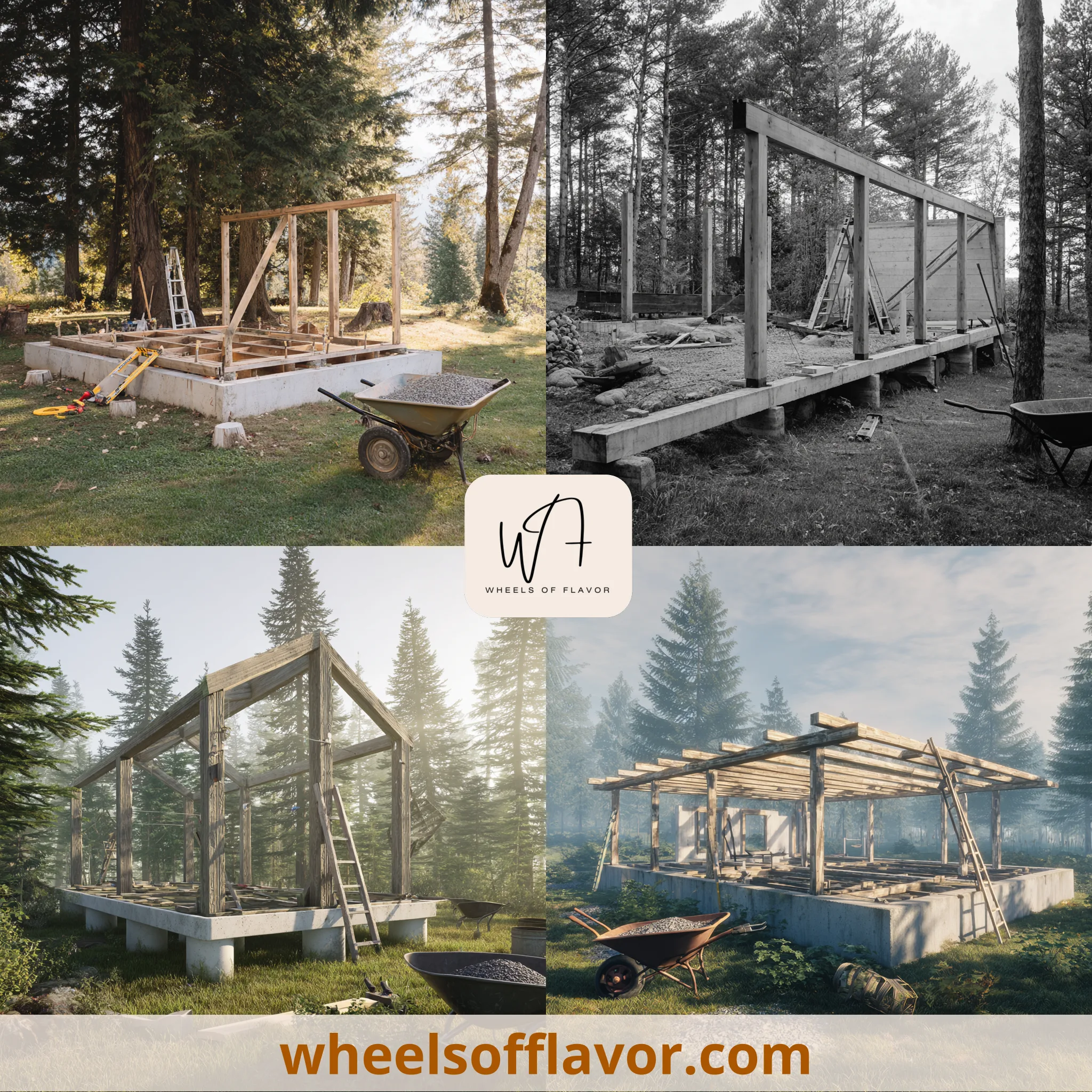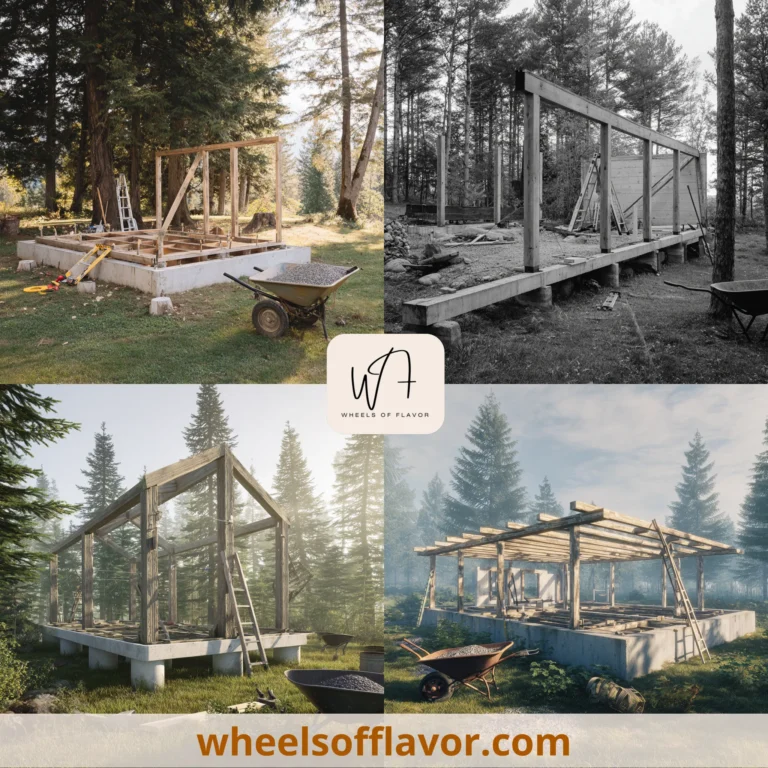
Building a cabin is more than just creating a cozy escape—it’s about laying a solid groundwork that ensures your retreat stands the test of time. Whether nestled in the woods, perched by a lake, or tucked into the mountains, the foundation is the unsung hero of any cabin project. It supports the entire structure, influences energy efficiency, and protects against environmental challenges like frost heave, moisture, and soil instability. Choosing the right cabin foundation ideas is crucial for safety, longevity, and even resale value. In this article, we’ll explore why this topic matters so much, especially for DIY enthusiasts and those seeking budget-friendly options. A poorly planned foundation can lead to costly repairs, while a well-executed one enhances comfort and sustainability. We’ll dive into various approaches, from traditional to modern, helping you make informed decisions for your dream cabin. After all, a sturdy base is the first step toward countless memories in your personal haven. Don’t skip this foundational guide—it could save you from future headaches and elevate your cabin experience.
Cabin Foundation Ideas: Piers and Posts for Elevated Retreats
Piers and posts are popular cabin foundation ideas for their simplicity and cost-effectiveness, especially on sloped or uneven terrain. This method involves sinking concrete piers or wooden posts into the ground to support the cabin's frame, keeping it elevated above the soil. It's ideal for minimizing site disturbance and allowing air circulation, which helps prevent moisture buildup and rot. For example, in areas with high rainfall or snow, an elevated foundation can reduce the risk of water damage. However, it requires careful planning: piers must be spaced evenly and anchored below the frost line to avoid shifting. Materials like pressure-treated wood or reinforced concrete ensure durability. This approach suits lightweight cabins and can be DIY-friendly with proper tools, but consulting local building codes is essential. According to experts at This Old House, piers can be a smart choice for seasonal cabins, offering flexibility for future expansions. Pair this with proper drainage and insulation for a cozy, stable retreat that blends seamlessly with nature.
Cabin Foundation Ideas: Slab-on-Grade for Modern Simplicity
Slab-on-grade foundations are a straightforward cabin foundation idea that involves pouring a single layer of concrete directly onto the ground. This method is excellent for flat sites and provides a solid, low-maintenance base that integrates well with radiant heating systems for energy efficiency. It's particularly suited for cabins in warmer climates where frost isn't a concern, as it eliminates the need for deep excavations. The slab includes a vapor barrier and insulation to prevent moisture ingress and heat loss, making it a practical choice for year-round living. Installation is relatively quick but requires professional grading and compaction to avoid cracks. For those on a budget, this can be cost-effective due to reduced material needs. However, it's less adaptable to slopes and may not be ideal for areas with expansive soils. As noted in resources from Bob Vila, slab foundations are durable and resistant to pests, enhancing the cabin's longevity. Combine this with eco-friendly materials like recycled concrete to align with sustainable cabin trends, ensuring your foundation supports both your lifestyle and the environment.
Cabin Foundation Ideas: Full Basements for Added Space and Utility
Full basements are a versatile cabin foundation idea that adds valuable living or storage space beneath your retreat. By excavating deep into the ground and constructing walls with concrete or masonry, this foundation creates a basement that can serve as a workshop, guest area, or utility room. It's ideal for colder regions, as it places the living space below the frost line, reducing heat loss and providing insulation against extreme temperatures. This method requires more labor and materials, making it costlier than other options, but the extra square footage can enhance the cabin's functionality and resale value. Key considerations include waterproofing, proper drainage systems, and adherence to local codes for safety. For DIYers, it's often best to hire professionals for the excavation phase to avoid structural issues. According to Family Handyman, basements can double as storm shelters in areas prone to severe weather. When planning, integrate features like egress windows for light and escape routes, and explore ideas from https://wheelsofflavor.com/ for decorating the basement to maximize its potential as a cozy extension of your cabin.
Conclusion
Choosing the right foundation is a cornerstone of cabin building, impacting everything from durability to daily comfort. Throughout this article, we've explored key cabin foundation ideas like piers for elevation, slabs for simplicity, and basements for extra utility. Each option offers unique benefits, tailored to different terrains, climates, and budgets. Remember, a well-planned foundation not only prevents future issues like settling or moisture damage but also enhances energy efficiency and livability. As you embark on your cabin project, consider factors such as soil conditions, local regulations, and long-term goals. The future of cabin foundations leans toward sustainable materials and smart designs, so stay informed about innovations like insulated concrete forms or helical piles. For more inspiration on making your retreat feel like home, check out our guides on https://wheelsofflavor.com/. Start with a solid base, and your cabin will be a sanctuary for years to come—dream big, but build wisely.
Frequently Asked Questions
Q: What is the most cost-effective cabin foundation idea for a beginner?
Piers and posts are often the most cost-effective cabin foundation idea for beginners, as they require fewer materials and less excavation. This method involves setting concrete blocks or wooden posts at key points to support the structure, making it DIY-friendly with basic tools. However, it's crucial to ensure proper spacing and frost protection to avoid instability. Always check local building codes and consider soil tests to keep costs low while maintaining safety.
Q: How do I choose between a slab and a basement foundation for my cabin?
Choose based on your site conditions and needs: slab foundations are best for flat, warm areas where simplicity and low maintenance are priorities, while basement foundations suit colder climates or when extra space is desired. Consider factors like budget—slabs are generally cheaper—and long-term utility. For instance, a basement can add storage or living areas, but requires more excavation. Consulting a professional can help match the foundation to your cabin's location and design goals.
Q: Can I build a cabin foundation myself, or should I hire a professional?
While some cabin foundation ideas, like simple pier systems, can be DIY projects with proper research and tools, it's often wise to hire a professional for complex tasks like pouring slabs or excavating basements. Foundations are critical for structural integrity, and mistakes can lead to costly repairs. If you're experienced, start with small projects and use reliable guides; otherwise, invest in expert help to ensure safety and compliance with local regulations, saving time and stress in the long run.

